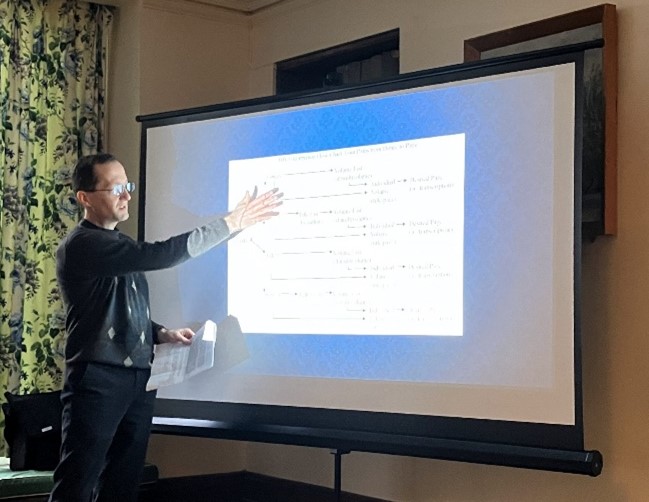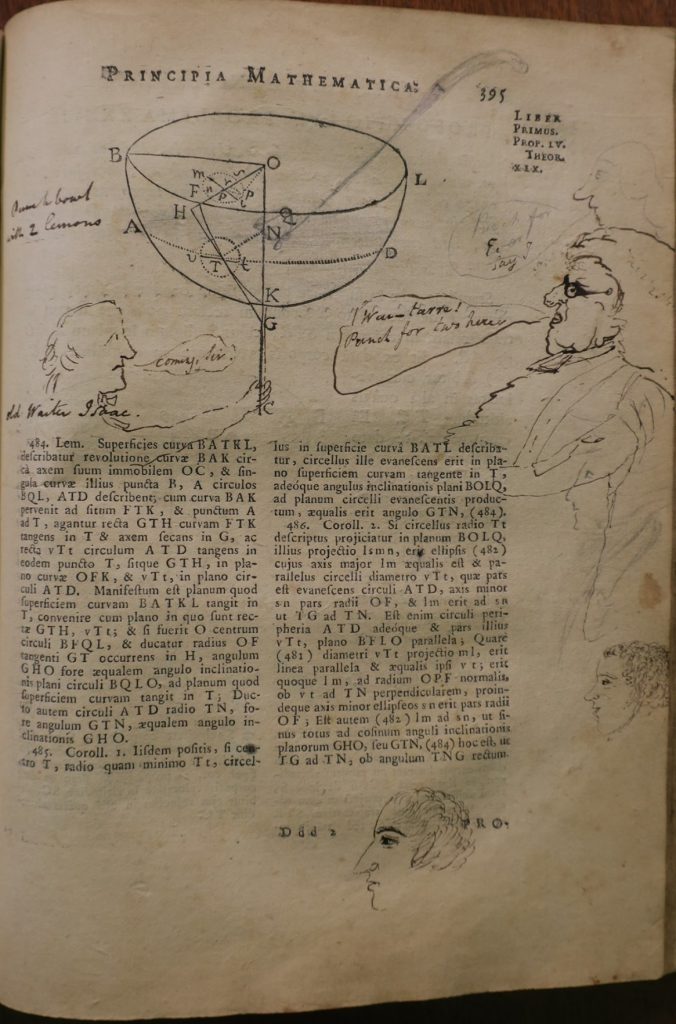I have just returned from my thirteenth data gathering trip to Somerville’ College’s John Stuart Mill Collection, as well as my sixth March Mill seminar, most recently entitled “Tea with Mill (and Taylor).” At the latter it was my pleasure to announce both that the Somerville College Library staff had completed the marginalia census (with a provisional count of 49,296 items that is almost certain to rise as photos are processed and marks and annotations transcribed) and that, earlier in the week, owing to an absence of marginalia in Mill’s German and Italian works, I had caught up with them.

Also announced was the rediscovery of one of the lost volumes of Mill’s copy of Francis Bacon’s collected works, which will itself need to be accessioned, surveyed, and subsequently photographed. And so, one more trip, at least, will be needed to claim that the digitization of all handwritten marks and annotations in Mill’s library has been completed. Nevertheless, these two marginal milestones still merited a toast of finger sandwiches and miniature scones.
Evidence that the collection continues to serve as a primary source for new research was provided by Polish doctoral student Elżbieta Filipow, who presented on “Harriet Taylor Mill and Other Women: Inspirations of John Stuart Mill’s Feminist Sensitivity.” With a comprehensive list of female authors, female relatives and acquaintances, and texts purporting to offer “words of weight” about the Woman Question—all with a presence in Mill’s library—Filipow showed how it might be possible to reconstruct a richer family of influences at work upon Mill’s thoughts, words, and deeds concerning women than has yet been acknowledged by his biographers.
That more work waits to be done was also perceptible to me in the midst of the rush of photography. Mill’s copy of the 1819 Renouard edition of Voltaire’s collected works (66 volumes), for example, is extensively and unevenly marked. Volumes 24 (Mélanges Historique), 29 (Philosophie Tome I) and 39 (Romans Tome I) all show expansive evidence of Mill’s thorough attention.
Thoroughness, although not always of the sort one might expect, is also apparent in Mill’s 1739 copy of Isaac Newton’s Principia Mathematica. Obviously owned by a succession of meticulous pupils, the text contains at least four palimpsestic layers of marginalia in various pencils and inks. These often appear alongside one another, nowhere more amusingly than on p. 395 of volume I, where a lesson in spherical geometry becomes an opportunity for cartoonish doodling:

By adding a ladle to Newton’s hemisphere, an eighteenth-century reader has converted the lesson into a “Punch bowl with 2 lemons,” to be served by “old Waiter Isaac” to one fully inked gentlemen who appears to have imbibed before (“Waitarre! Punch for two here”) and his half-inked companion (“Punch for Ever say I”). On the bottom half of the page are two more figures whose style and location suggest that they may have been added later. Was a young John Stuart, who was “observed twice when he came out of a room where he had been shut up with Newton’s principia” (Mill, CW I: 564), in October 1817, aged 11, perhaps inspired to indulge in an inutile moment?
Albert D. Pionke, Project Director